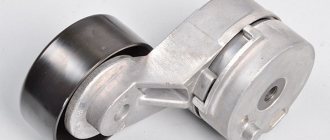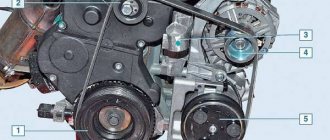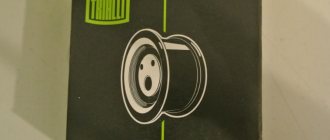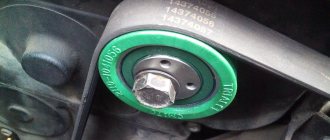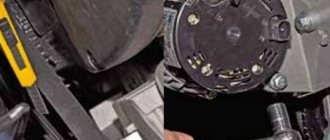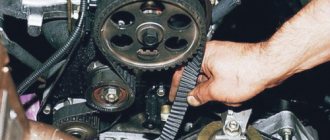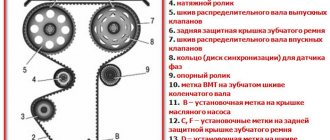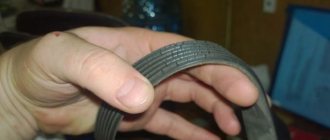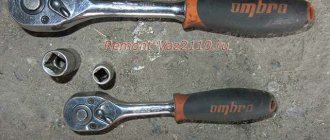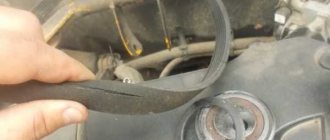Mobile operator
SIM card from Yota with unlimited Internet for tablets
The first launch of the first 4G network in Russia, authorized by the Ministry of Communications of Russia, took place by the owners of the Yota brand at the beginning of 2012 in the city of Novosibirsk.
As of March 2015, 4G networks have been launched into commercial operation in 39 regions of Russia. 4G is expected to launch in other cities. As of the end of 2014, Yota’s subscriber base was 1.2 million users.
Providers
Shareholders of MegaFon OJSC and Scartel LLC (Yota brand) announced a merger of assets, their press service reported. As a result of the agreements reached by the shareholders, the holding company Garsdale was created, combining 100% of the shares of Scartel and more than 50% of the shares of OAO MegaFon.
Launch history
In 2006, co-owner of St. Petersburg Denis Sverdlov and entrepreneur Sergei Adonyev decided to create the first operator in Russia operating on the basis of the then new data transmission technology - WiMAX. The name of the company was invented during an SMS correspondence: “What if Yota?” In the fall of 2008, Scartel was the first in Russia to deploy WiMAX networks in Moscow and St. Petersburg in the range of 2.5-2.7 GHz.
In 2010, Yota announced plans to switch from WiMAX technology to a new data transmission technology - LTE, and on August 30, 2010, a test launch of the first network of the new communication standard in Russia took place. Yota was the contractor for the construction of the WiMAX network and the subsequent transition to LTE. As of August 2015, Yota users are provided with Internet using LTE technology in 48 regions of Russia.
From April 2014 to April 2015, the general director of Scartel LLC was Anatoly Smorgonsky. His place was taken by Mikhail Dubin, executive director for business development in the mass market. In August 2015, Dubin left both positions, and Konstantin Likhodedov was appointed new general director of Scartel (and executive director of MegaFon).
In November 2016, Vladimir Dobrynin was appointed to the position of General Director of Scartel LLC.
Detailed chronology
- 2007, May - founding of the company.
- 2008, September 2 - official launch of test operation of WiMAX networks at a frequency of 2.5-2.7 GHz in Moscow, St. Petersburg and Ufa under the Yota brand.
- 2008, October 2 - the start of sales of the world's first phone with WiMAX support, HTC MAX 4G, made by HTC by order of Yota specifically for Russia.
- 2008, December 25 - start of sales of WiMAX Express cards for connecting to Yota.
- 2009, March 23 - sales of the first WiMAX laptop in Russia began.
- 2009, June 1 - start of commercial operation for individuals.
- 2009, August 18 - Yota's subscriber base exceeded 100,000 people.
- 2009, October 7 - start of sales of Yota Egg devices.
- 2009, October 12 - subscriber base - more than 150,000 people.
- 2009, December 3 - subscriber base - more than 250,000 people.
- 2009, December 16 - Yota begins testing the network abroad in Russia, in Managua (Nicaragua).
- 2010, August 30 - launch of Russia's first LTE network in Kazan.
- 2010, December 5 - The First International Yota Space Festival started.
- 2011, December 1 - official launch of the Yota network in Belarus.
- 2011, March 3 - Yota, in the presence of Russian Prime Minister Vladimir Putin, signed an agreement with telecom operators VimpelCom, Megafon, MTS and Rostelecom on the development of the LTE network in Russia.
- 2011, June 6 - Yota One and Yota Many went on sale.
- 2012, June 11 - Yota ceases providing services in Belarus.
- 2012, July - reorganization was completed in the form of the merger of Scartel LLC (Yota brand) with MegaFon PJSC.
- 2012, October 9 — Yota was the first in Russia to launch LTE-Advanced mobile communication technology on a commercial network in Moscow. 11 base stations are participating in the launch [ source not specified 425 days
]. - 2014 April 23 - the commercial launch of a new federal cellular operator in Russia - the Yota operator - was announced.
- 2014, August 13 - start of issuing pre-ordered SIM cards of the virtual cellular operator "Yota".
- 2017, January 25 - tariffs with unlimited Internet for smartphones are closed for connection. Introduction of a new tariff line for smartphones with limited traffic.
Cooperation between MegaFon PJSC and Scartel LLC
In April 2014, the emergence of a new federal cellular operator Yota was announced based on the combined network of MegaFon and Scartel. In fact, we are talking about the emergence of another “niche” virtual operator. In August 2014, the issuance of Yota SIM cards to users who pre-ordered started in six cities: Moscow, St. Petersburg, Vladivostok, Khabarovsk, Vladimir and Tula. By the end of 2014, the coverage area had grown to 28 cities, and as of August 2015, the cellular operator Yota issues SIM cards in 52 regions of Russia. The combined network of Megafon and Scartel includes broadcasting only on the 2600 MHz band (Band 7), so in cities where their own LTE networks were built at 800 MHz (Band 20), for example, in Tolyatti or Syzran, Yota It is not possible to provide 4G communication services due to lack of coverage.
As a cellular operator, Yota provides its customers with federal coverage in 2G / 3G / 4G networks, free calls within the Yota network, federal mobile numbers in +7 and 8 formats, as well as a single cost for services within the Russian Federation and coverage areas bordering Russia territories. It is possible to switch to a Yota SIM card while maintaining the old phone number.
In addition, Yota has released a multi-format SIM card that includes NFC and electronic digital signature modules.
In October 2014, the product line of the mobile operator Yota expanded with SIM cards for tablets, allowing customers to independently choose the required speed of unlimited network access, which determines the size of the subscription fee.
Since July 2015, Yota began providing mobile communication services in the Arkhangelsk, Samara, Nizhny Novgorod, Pskov, Novgorod, Tyumen regions, Kalmykia, Mordovia, Udmurtia, and Altai Territory. In August 2015, Yota appeared in the Sverdlovsk, Chelyabinsk, Kaliningrad, Volgograd regions, Perm Territory, Khanty-Mansi Autonomous Okrug, Altai Republic, Dagestan, Chechnya. In September 2015, the issuance of SIM cards started in the Saratov, Belgorod, Kirov, Murmansk, Ivanovo, Tver, Smolensk regions and Stavropol Territory. In October 2015, Yota began providing communication services in the Amur region, Buryatia, Jewish Autonomous Region, Trans-Baikal Territory, Yakutia, and in November 2015 - in the Rostov and Ryazan regions. Since January 2016, you can connect to the Yota mobile operator in the Republic of Ingushetia, Adygea, Kabardino-Balkaria, North Ossetia and the Voronezh region, from February 2016 - in Karachay-Cherkessia, from July 2016 - in the Sakhalin region, from August 2016 - in Komi and Yamal-Nenets Autonomous Okrug, since October 2016 - in the Kurgan region.
On January 25, 2022, tariffs with unlimited Internet are closed for connection. A new tariff line with limited traffic was introduced; the new tariffs have no restrictions on Internet distribution. The company offers the “Unlimited mobile applications” option, where traffic is not spent on some social networks and instant messengers. Subscribers who connected before January 25, 2022 will remain on tariffs with unlimited Internet. [ significance of the fact?
]
Yota and Yota Devices
The division of the companies did not take place in an atmosphere of secrecy, but was not widely covered in the media. This was the first and main reason that many - both users and representatives of the telecom market - still consider Yota and Yota Devices to be one company. [ source not specified 388 days
]
Initially, Yota and Yota Devices were indeed one company. More precisely, the latter were a department within Yota and were engaged in the development of user devices - modems and routers. In 2011, Yota Devices left Big Brother, became a separate company and began developing its own smartphone.
Logo
The company's logo shows an upside-down man, made in a minimalist style, called “Nuf”, or “Nuf”: if you read this word backwards - “Fun” (from English - “fun”).
How to tension the alternator belt
Car manufacturers have provided one of three methods for adjusting the tension force in their models:
- By moving the generator along with the guide bar;
- Rotate the adjusting bolt;
- Fixed with a tension roller.
The methods differ fundamentally in their approach to execution, but each is good in its own way and suits its purpose.
Adjustment by guide bar
Mounting the generator on an arc-shaped plate with guide slots is typical of outdated models.
After loosening the fixing nut, the structure is pressed away from the engine body, giving the belt the required tension, and is again secured in the selected position by reverse tightening with a wrench or socket.
Release bolt tension
Improved versions of this method are common in modern brands of cars. They are characterized by smooth tension, without sudden jerks and unwanted loads on the rubber product. Adjustment will require more effort than the previous option, but the deflection of the branches with meticulous execution is maintained up to a millimeter. Sequencing:
- Allow freedom of movement of the generator along the frame, for which reduce the tightening of the nuts securing the housing to the frame.
- By rotating the head of a special bolt, achieve the desired free sag of the ring connection.
- Re-secure the generator firmly.
Roller pull-up
The method is fundamentally different from the considered schemes. If previously the tension was carried out by displacing the generator, here the belt is guided by a special cylindrical roller. The heavy electrical device remains motionless, simplifying the repairman's work.
The coil of the rotating correction part is attached directly to the power unit or through a movable bracket.
An eccentric design pulley roller is directly mounted on the internal combustion engine body. To tighten it, just rotate the roller around the offset axis.
Automatic correct tension of the generator belt is ensured by a roller console equipped with a spring. A person is involved only in replacing worn-out spare parts.
When attaching the roller to a holder with guide slots, adjustment is made in the same way as in the case of a guide bar.
To final check the gear position, turn the crankshaft 3 turns with a key and take a control measurement. A short trip and one more check will be useful.
How to check tension?
Before adjusting and tightening the drive belt in a car, it is necessary to check the tension value. This parameter is unique for each individual car, as well as the type and model of the generator set.
You can learn more about the tension value from the information provided in the service documentation for the machine. This data may be indicated in the technical manual for the generator unit or drive belt.
The amount of tension will be influenced by the use of additional electrical equipment installed in the machine. In particular, we are talking about the air conditioning system and the hydraulic power steering system. In general, we can say that when 10 kg is applied to the strap, its deflection should be about 1 cm. The product should be pressed for the longest period, directly between the pulleys, and the pressure force should be approximately 10 kg. But this value is only approximate, since in many VAZ models this parameter is 6-10 or 15-15 mm.
How to understand that the drive belt tension roller needs to be replaced
If you notice one of the problems listed above in your car, you need to check how the tensioner of the engine drive system functions. At the same time, diagnostics is also necessary for other nodes. The functionality check is carried out in stages:
- External inspection of the drive belt and the mechanisms that it drives.
It is necessary to start the engine to check whether there is any runout of the belt, tension roller or pulley, and then consider replacement. - Checking the elasticity of the generator belt
Turn off the running engine. Then, at the longest gap between the pulleys, try to turn the belt to the right. If you can move it 90°, then the tension is normal. If the scroll angle is greater or less, the tension must be adjusted. - Dismantling and checking the functionality of the belt
At the same time, you need to inspect the pulleys and rollers, in particular, for the presence of play. The belt is easy to remove. Lightly unscrew the tensioner nut to pull it off the pulleys. But first you should remember this position, since later (after replacement) the belt must be put on the same place.Take your phone and just take a photo of your gear. Check the removed drive belt for cracks and delaminations. It should wear evenly. If you notice any defect, do not skimp on replacing the drive.
One-sided abrasion indicates that the roller mounting pin or bracket is bent and causing misalignment, which must be urgently corrected. Otherwise, your belt will quickly become unusable.
- Checking the play (free play) on the pulleys
Rotate the roller to make sure there is no obstruction in movement. Any binding indicates a worn bearing, which means you will need to replace the generator drive belt roller. Don't forget to inspect the contact surface of the plastic pad, which should be smooth. If you see grooves and irregularities, the tensioner should be replaced.After installing the new roller, the hum and squeak should disappear. Otherwise, the cause of the malfunction is in other places. And the drive of these elements is carried out due to the elasticity of the belt.
Tensioner bearing selection
Looking ahead, I will explain to you how to quickly purchase a new bearing without any hassle.
You have disassembled the tension pulley assembly and removed the bearing.
Take it and go to a specialized automobile store.
Show it to the seller and ask for the same one or an analogue.
If you are in no hurry to make repairs, order the part online.
Tell the manager of the online store by phone the make of the car, the year of manufacture and the numbers indicated on the bearing itself.
He will select the required part for you.
But I advise you, don’t look for expensive products. All the same, they will not be used much longer than the average price.
But don't buy cheap Chinese analogues.
They are of course much cheaper than catalog numbers.
However, they pass for a small amount of time.
Then again you will need repairs and replacement of the part.
And it will cost a pretty penny.
So, you purchased a new bearing, start replacing it.
Typical generator failures
A car generator is a rather complex device, including various parts, components and mechanisms. But if we talk about breakdowns of this unit, they happen mainly not with internal, but with external parts and components.
One of the most common malfunctions in the operation of a car generator is usually considered to be damage to the drive belt. Moreover, the weakest point is not the circuit itself, which has a fairly large margin of safety, but the generator belt tensioner roller, which needs replacement over time.
It would seem like a very insignificant detail, which is also very inexpensive (the cost of tension rollers will be discussed below), but what a great significance it has! This article will discuss whether it is possible to replace the generator belt tensioner roller with your own hands and how to correctly carry out this procedure.
Signs of failure
There are several signs of problems in the operation of this element:
- the generator does not fully charge, or no electricity is supplied to the on-board network at all;
- squeak from the side of the belt;
- increased hum;
- strong vibration of the roller or belt when the power plant is running;
- play in the roller;
- belt wear on one side;
Read also: How to twist a seat belt
It is worth noting that some symptoms are also inherent in malfunctions with the elements that the roller operates. For example, a hum or squeak can also be the cause of wear on the bearings of the power steering pump, air conditioning compressor and the same generator.
Video: Repairing the generator belt tensioner pulley
If the belt breaks on the road
Do motorists often encounter the alternator drive belt breaking on the road? But what to do if this fate befell you? Fortunately, there are several ways to quickly troubleshoot a problem on the road. All of them are temporary, but this is enough to get to the nearest service without any problems.
If the alternator belt breaks on the road
Old camera
If by luck there is an old camera in the trunk, it can be used as a replacement for the alternator belt. You need to cut a small ring at least 20 mm wide. Then install the finished product.
Alternator belt from an old camera
Wide belt
You can also fix the problem using a regular belt. The main thing is that it has a large diameter. You need to cut a belt of the required length and width from it, and then tie it with wire. A self-cut alternator belt can last for dozens of kilometers.
Even an old belt can help a motorist
Clothesline
Even an ordinary clothesline in skillful hands can turn into a worthy substitute for a generator drive belt. But to increase the strength, this rope must be folded 2-3 times and intertwined. A tied clothesline of a certain length must be put on the pulleys. Of course, in terms of reliability, such an invention is much inferior to previous versions. But if the generator belt breaks on the road, and there is nothing at hand except a rope, it can save the situation.
Generator belt made from clothesline
see also
Comments 35
explained it well. Well done
Thank you! I think that for many (especially those who are not good at repairs) it’s easier to do something when everything is more or less “chewed”.
New details have been revealed. It looks like I was in vain driving Shnivy to the roller - the whistle was not from him. My crankshaft pulley fell apart - I was turning it by hand. To be honest, I already installed a new video, read the original one, but the car whistle was definitely not because of it, and therefore about a couple of months of operation - I drove it.
It would be better if the video whistled
